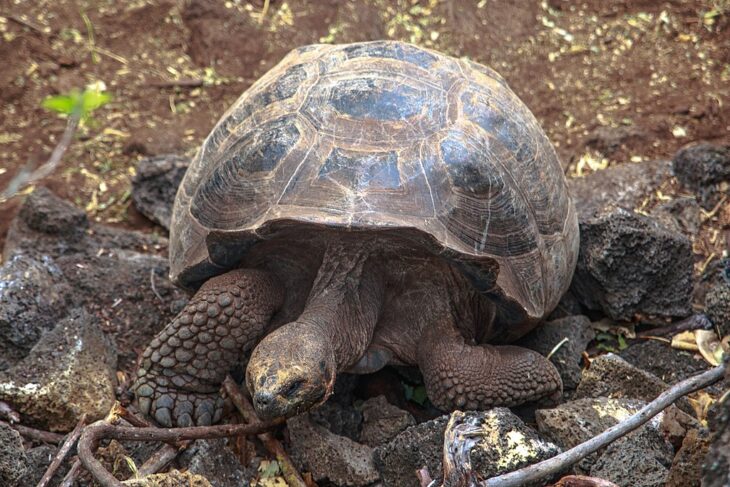The Galápagos Islands are a chain of equatorial islands in the eastern Pacific Ocean, about 900 kilometers (or 500 miles) west of northern South America. Scientists have identified over 1,500 native species of birds, reptiles, and other animals found exclusively on these islands, which are known for their biodiversity. One famous example is the Galápagos giant tortoise, which can weigh up to 400 kilograms (nearly 1,000 pounds), making it the largest cold-blooded land animal.
Scientists have speculated on the evolution of Galápagos giant tortoises since Charles Darwin first visited the islands aboard the HMS Beagle in 1835. Researchers agree these tortoises originated on the South American continent, but they still don’t know how they traveled to the islands or when they reached their impressive size.
Some scientists think the Galápagos tortoises became giant after they migrated to the islands, while other scientists propose the tortoises got bigger before they left the mainland. Proponents of the ‘after’ hypothesis point to several examples of island-dwelling birds and snakes that have similarly outgrown their continental counterparts. Proponents of the ‘before’ hypothesis contend that gigantism could have aided the tortoises in crossing the ocean. They suggest that larger tortoises have slower metabolisms, so would lose less body heat in the water, and would have larger, more buoyant shells.
Researchers from the USA and Ecuador recently revisited the Galápagos giant tortoise debate based on new fossils from coastal Ecuador. Previous paleontologists discovered large fossil tortoises in the southern part of South America and argued that they belonged to the Galápagos tortoise’s ancestors. However, these fossils were located far south of the equatorial islands, and scientists found no direct evidence that they were related to the Galápagos species. Therefore, these researchers wanted to test giant tortoise fossils found closer to the islands.
The new tortoise fossils consisted of shell material collected from sandstones of the Tablazo Formation in continental Ecuador. The team explained that these fossils were only briefly described by a researcher studying mammal fossils in the 1950s, so previous scientists may have missed them. They estimated the fossils came from a tortoise that was more than 1 meter (or 3 feet) long, similar in size to the Galápagos tortoises. Past researchers constrained the age of the Tablazo Formation to between 780,000 and 12,000 years old, making these the oldest giant tortoise fossils scientists have found in northern South America.
The team compared the new Ecuadorian giant tortoise fossils with other South American and Caribbean giant tortoise fossils and living Galápagos giant tortoises. They used traits like shape, structure, size, and age of the tortoise fossils and modern tortoise shells to create a diagram depicting how these tortoises and their potential ancestors were related, called a phylogenetic tree. They referred to these trees as tip-dated, since they placed different tortoise species at the ends, or “tips,” of the trees, and assigned each species an age estimate, or “dated” them.
They used a statistical method called Bayesian analysis to evaluate the probability that each tree was correct based on known relationships between some species and new data from the Ecuadorian fossils. Based on the shape of their most probable tree, the team found that the Galápagos giant tortoises were more closely related to the Ecuadorian giant tortoise fossils than any other species they included, confirming the 2 groups shared a common ancestor.
The researchers interpreted their phylogenetic analysis to support previous researchers’ assertions that a population of giant tortoises inhabited coastal Ecuador more than 2 million years ago. They explained that this is around the same time and place scientists think the Galápagos tortoises hitched a ride to the islands on the Humboldt Current, which flows north along the western coast of South America. They suggested their findings therefore support the ‘before’ hypothesis proposed by some scientists.
The researchers concluded that Galápagos tortoises were giant before they left mainland South America. However, they cautioned that the South American fossil record is incomplete and poorly preserved, so dating the evolution of the Galápagos tortoises remains challenging. They recommended future scientists describe and analyze more giant tortoise fossils from South America, incorporating ancient DNA when possible, to further test when and where the giant Galápagos species arose.


